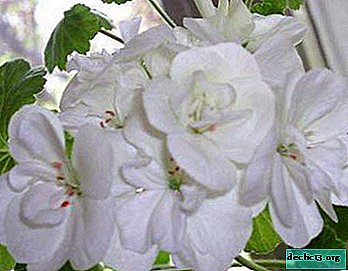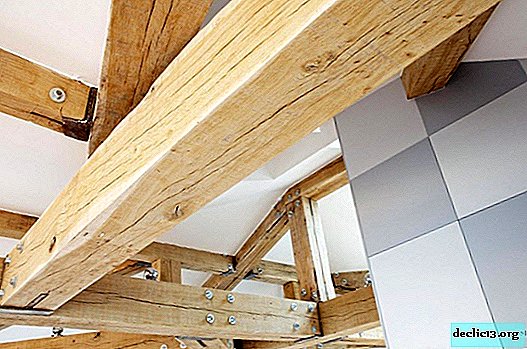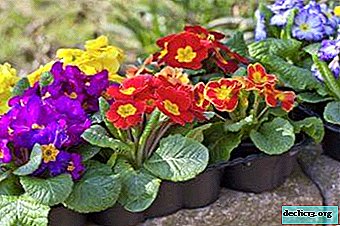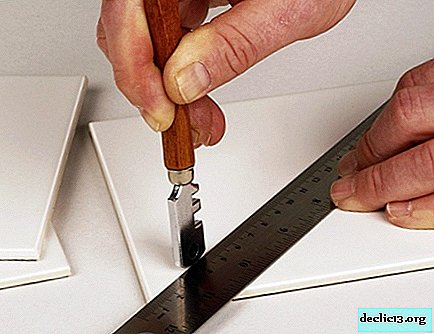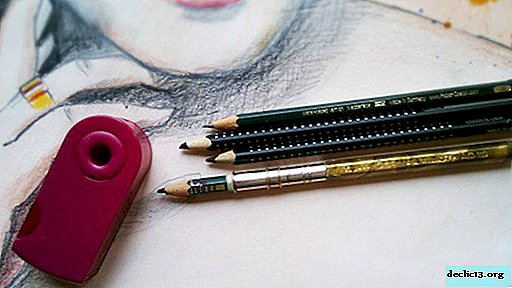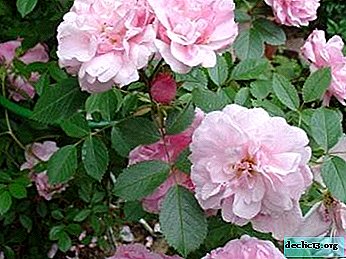What to do if the flowers have wilted “Women's happiness”? We find out the reasons and reanimate spathiphyllum
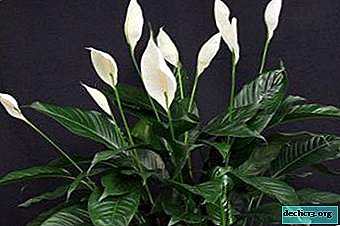
Despite the fact that spathiphyllum is native to the tropics, it is quite common in our latitudes. After all, it is distinguished by its undemanding nature from other indoor plants. However, sometimes a flower begins to fade for no reason.
The causes of wilting plants can be very different. Often, spathiphyllums are exposed to various diseases. And even improper care can cause an unhealthy kind of flower. About why spathiphyllum withered and what to do if it happened, read on ...
What is wilting?
The wilting process means the loss of stiffness, elasticity of leaves or flowers. In this case, the leaves become like a rag, turgor disappears, they are soft dark green in color. The upper parts of the flower, young shoots, stems lean down. Growth stops, the flower decreases in size. If no action is taken, the foliage will turn yellow, then dry and fall away.
Why is it happening?
Beautiful spacifillum loses its attractive appearance - the picture is created joyless. And it’s not about external signs. In fact, the reason lies in the violation of the biochemical processes of the plant due to:
- excess moisture;
- wrong soil composition;
- low humidity;
- fungal or bacterial infections;
- harmful insects;
- inappropriate flowerpot;
- transfer;
- hypothermia;
- insufficient watering;
- intense lighting.
How to revive spathiphyllum?
Unsuitable flowerpot
 Really, the loss of plant turgor may be due to an improperly selected pot. In one case, it is too cramped. Indoor flower grows fast.
Really, the loss of plant turgor may be due to an improperly selected pot. In one case, it is too cramped. Indoor flower grows fast.
If the root system is already located on the surface - this is a sure sign that the size of the pot is not suitable. The result is a lack of moisture, minerals, as well as a lack of space for further growth.
However a too large and wide pot will also cause a negative effect. In spathiphyllum, the root system first grows, which fills the entire space, and then shoots appear. And this is the reason that the exotic does not bloom and drops leaves.
How to help? When transplanting, the roots should be fully placed in a new pot. It is better to acquire a capacity 3-4 cm larger than before.
Reference! The maximum size of a pot for a plant in diameter is 30-35cm.Excess moisture
Spathiphyllum really prefers moist soil. But stagnation of water does not tolerate. After all, this causes problems with the roots, which are constantly in the wet substrate, and as a result, the process of decay occurs.
Perhaps such consequences are associated with a poor drainage layer or its absence. Or maybe quite frequent watering at a low air temperature. The root system is simply not able to absorb the amount of fluid that is supplied. Deterioration of the condition of the roots, respectively, is reflected in the leaves and flowers.
It is necessary to restore the previous state of the roots, here you can not do without a transplant:
- Extract the plant from the pot, analyze the root system.
- Rinse the roots under running warm water.
- Use a sharp knife to remove rotten, dry, inanimate roots.
- Disinfect slices with crushed activated carbon.
- Let them dry.
- To prevent fungal diseases, treat the roots with a weakly concentrated solution of the drug "Maxim".
- Transplant the flower into a new dry soil, with a mandatory drainage layer.
- Watering immediately after transplantation is not necessary.
- In the future, normalize the irrigation system.
- After moisturizing, drain the water from the pan in which the flower pot stands.
Drying out the soil
 Dry soil is a fairly common cause of wilted leaves. Lack of moisture and, therefore, nutrients, provokes the loss of leaf turgor, sluggish stem. A similar phenomenon is associated with improper soil composition, for example, excess peat in the soil. When watering, the upper peat layer is taken with a solid lump, thereby not letting moisture pass down the pot to the roots.
Dry soil is a fairly common cause of wilted leaves. Lack of moisture and, therefore, nutrients, provokes the loss of leaf turgor, sluggish stem. A similar phenomenon is associated with improper soil composition, for example, excess peat in the soil. When watering, the upper peat layer is taken with a solid lump, thereby not letting moisture pass down the pot to the roots.
First of all, you should check how wet the soil is after wetting. If the matter is in the ground, a change of substrate is needed:
- The flower, along with the pot, is placed in a container of water.
- We are waiting for the complete wetting of the soil, and while the roots are saturated with water, about 15-20 minutes.
- At the same time, you can pour water on top of the leaves.
- After a shower, give the plant time to dry.
- Transplant into a new land with the correct composition, without howling about drainage.
- Control the frequency of watering.
Disease
The withering of the green mass of spathiphyllum indicates possible diseases of the root system. One of these ailments is root rot. It occurs with overmoistening and hypothermia of the roots.
Important! A fungal disease develops rapidly, after which the plant lacks useful substances, moisture, respectively, leaves of the spathiphyllum wither, flowers fall, the roots rot.Urgent measures should be taken if external symptoms of the disease appear.:
- fungal spores on the surface of the soil;
- brown spots on leaf plates (you can read about brown and other spots on leaves of spathiphyllum here);
- rotten roots.
How to help:
- Isolate a diseased plant.
- Get a flower from the pot, inspect the root system.
- Rinse the roots under running warm water.
- Use a sharp knife to remove rotten, dry, inanimate roots.
- Disinfect slices with crushed activated carbon.
- Let them dry.
- Treat the plant with a solution of the drug "Glyokladin" or another fungicide.
- Transplant the flower into a new soil, with a mandatory drainage layer.
- Further reduce the number of irrigations.
- After moisturizing, drain the water from the pan in which the flower pot stands.
Harmful insects
Insects, which are considered the main pests of spathiphyllum: mealybug, aphid, sooty mushroom, scale insect. They can live on the back of the leaf, eat the juice of the plant. In this case, the leaves curl, wither, turn pale.
How to help with pests:
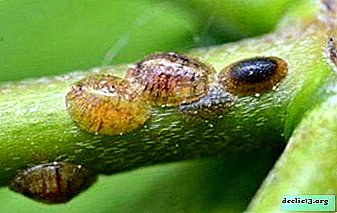 Isolate the affected plant to another room.
Isolate the affected plant to another room.- Perform a visual inspection for pests.
- Using tweezers, manually remove the insects.
- To wash foliage with soapy water.
- Try to apply more gentle methods of treatment, folk remedies.
- If these actions did not give the expected result, then, toxic drugs should be used.
Folk methods of pest control:
- From mealybug: Pour 100 g of citrus peels with boiling water in an amount of 1 liter. Put the infusion for 2-3 days in a dark room. After processing the leaves.
- From spider mites and aphids onion infusion: pour 100 g of onion husk with 5 liters of warm water, let stand for 4-5 days. After carefully drain and add a small amount of laundry soap.
Incorrect soil mix
The reason may lie in the absence of a drainage layer. A heavy, clogged, acidic environment negatively affects the condition of the flower, resulting in drooping foliage. Also, if the soil does not have good hygroscopicity, insufficient penetration of air and moisture.
How to help a plant when it has the wrong soil:
- After watering, check how wet the soil is, what its structure is.
- Extract the plant from the pot, remove the remains of peat soil from the roots.
- Mandatory drainage 2 cm thick.
- Transplant the flower again into a light, uniform soil.
Transfer
Attention! The transplant process for indoor exotics is stress.The consequences of the change of soil, the plant experiences acutely the first 2-3 weeks. And in the process of acclimatization of the spathiphyllum, the foliage loses turgor, turns pale, becomes lethargic. The plant spends all its forces on restoration; as a result, there is a shortage of minerals and water. During this period, the flower needs to be paid a little more attention.
Dry air
Spathiphyllum loves humidified air, this is due to its natural habitat. Therefore, at home, it reacts sharply to dry air. The consequences are downy leaves. The situation is especially acute in the winter season, with the operation of heating appliances.
How to help with dry air:
- Spray with warm purified water at least 2 times a day.
- Put a container of water with a flower.
- Use a household humidifier.
When to save the plant will fail?
 In 90% of cases, leaf wilting is due to problems with the root system. According to the degree of damage, they are divided into mild, moderate, severe stages. It is difficult for inexperienced gardeners to immediately determine the stage of the disease. To do this, pull the plant by the stem, trying to pull it out.
In 90% of cases, leaf wilting is due to problems with the root system. According to the degree of damage, they are divided into mild, moderate, severe stages. It is difficult for inexperienced gardeners to immediately determine the stage of the disease. To do this, pull the plant by the stem, trying to pull it out.
- If this is difficult to do, then the problem is not in the roots. This condition of a houseplant can be restored by adjusting the care.
- If it was not difficult to get a flower, it means taking rescue measures late. What could have happened:
- serious atrophy of plant tissues has occurred, and cannot be restored;
- most of the root system died due to lack of fluid.
Withering leaves is a serious enough symptom to ignore. When the first signs appear, operational measures should be taken to optimize the temperature and humidity parameters in the room, and care should be taken in accordance with the fundamental rules. Otherwise, the wilting of the leaves will entail the death of the whole plant. Now you know what the spathiphyllum probably wilted from and how to save it.

 Isolate the affected plant to another room.
Isolate the affected plant to another room.
